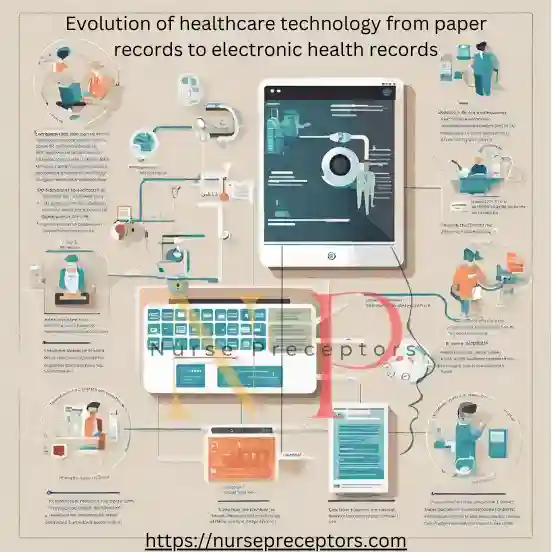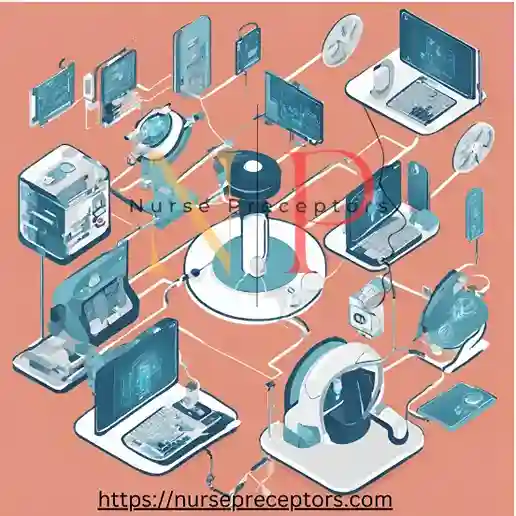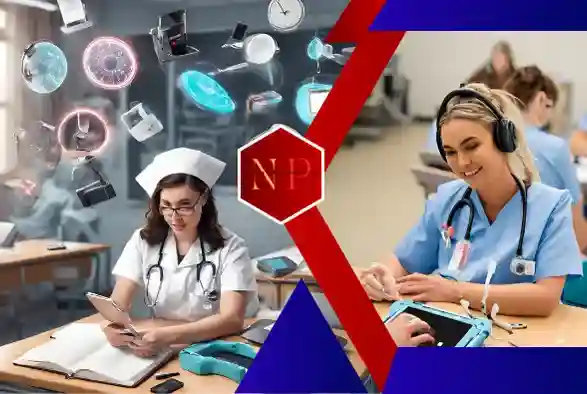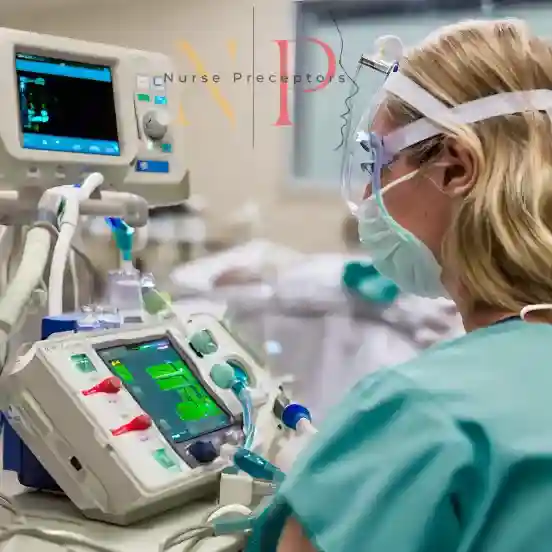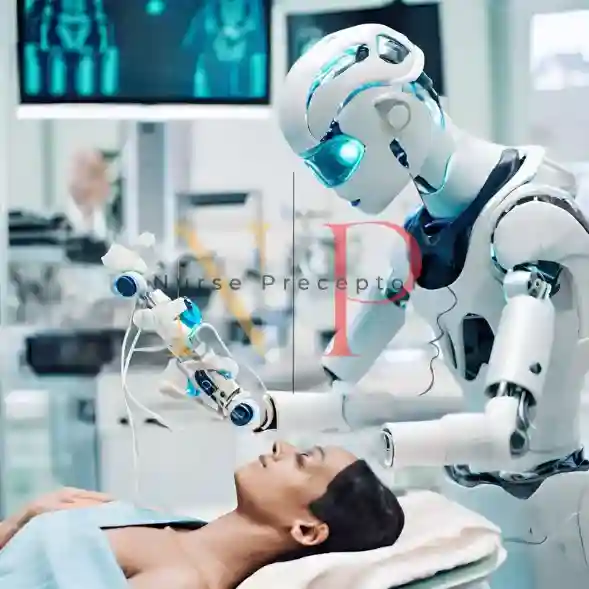1. What is health care technology?
Healthcare technology refers to the use of devices, medicines, vaccines, procedures, and systems developed to solve health problems and improve quality of life.
This field is driven by technology to enhance healthcare delivery and patient outcomes. From electronic health records and telemedicine to mobile health applications, artificial intelligence, and advanced robotics in surgery, digital healthcare encompasses a wide range of products and services.
The intersection of healthcare, science, and technology forms the foundation of healthcare technology. It has emerged as a powerful tool that enables a more personalized, precise, and efficient approach to patient care.
Healthcare technology has transformed the traditional healthcare system by streamlining clinical workflows, improving patient safety, increasing transparency, and facilitating communication between patients and healthcare providers.
Furthermore, healthcare technology has tremendous potential in managing chronic diseases, predicting epidemics, improving drug formulation and administration, and providing more effective emergency services.
For instance, wearable devices can monitor patients’ vital signs, enabling physicians to make informed decisions about their health in real time. Telemedicine platforms allow for remote patient monitoring and virtual consultations, improving healthcare accessibility for those living in remote areas.
Healthcare technology is advancing quickly, offering innovative breakthroughs that could revolutionize medicine in the future. However, like any other technology, it poses certain challenges such as data privacy concerns and the need for adequate training for healthcare providers.
Using healthcare technology has undeniable advantages as it redefines patient care by making it more efficient and effective, despite the challenges.
2. Evolution of healthcare technology: Past, Present and Future
The evolution of healthcare technology from paper records to electronic health records (EHRs) marks a significant shift in the management and delivery of healthcare services.
In old times, the traditional system of paper records was characterized by extensive paperwork, manual data entry, and storage problems. These systems were not only time-consuming but also prone to errors and mismanagement, which could potentially jeopardize patient care.
Today, the introduction of electronic health records represented a radical step forward in the evolution of healthcare technology. EHRs provide a comprehensive digital record of a patient’s medical history that can be shared across different healthcare settings.
This transition from paper records to EHRs has brought about several transformative changes. It has streamlined workflows, improved data accuracy, enhanced patient safety, and facilitated better coordination among healthcare providers.
EHRs have also empowered patients by giving them easier access to their health information, thereby promoting active participation in their care.
However, the evolution from paper records to electronic health records was not without challenges. While EHRs overcame many of the limitations of paper records, they introduced new issues such as concerns about data privacy and security.
The potential for technical glitches and system crashes also posed a threat to the smooth functioning of healthcare services. Nevertheless, these obstacles have been largely mitigated through rigorous security protocols, regular system updates, and user training.
You May Also Like To Read : Founders of modern nursing
for future, it has revolutionized how healthcare providers manage patient information, coordinate care, and engage with patients. Despite the challenges encountered along the way, the shift to electronic health records has undeniably improved the efficiency, accuracy, and quality of healthcare services.
As technology continues to advance, we can anticipate further enhancements in EHR systems that will drive the evolution of healthcare toward more personalized, integrated, and patient-centered care.
3. What are the advantages of Electronic Health Records?
The implementation of Electronic Health Records (EHRs) has revolutionized the healthcare sector in numerous ways. EHRs have several advantages that significantly improve the efficiency, accuracy, and quality of healthcare services.
1. Data organization
The major advantage of EHRs is that they provide a comprehensive view of a patient’s medical history at a glance, thus enabling healthcare providers to make informed decisions quickly.
2. Error reduction
Another advantage of EHRs is their ability to reduce errors in patient data management. Traditional paper records are prone to errors such as illegible handwriting, misplaced files, and incomplete information.
EHRs, on the other hand, allow for clear documentation and easy retrieval of patient data, thus minimizing the chances of medical errors due to misinterpretation or loss of vital information. This advantage translates into improved patient safety and better quality of care.
3. Effective communication
Moreover, EHRs offer the advantage of streamlined communication among different healthcare providers and institutions. They facilitate easy sharing and transfer of patient records across different platforms and locations, thus ensuring continuity and coordination of care.
This is particularly beneficial in cases where a patient is being treated by multiple providers or in different healthcare settings.
4. Standardization
The advantage of EHRs extends to the realm of healthcare research as well. They provide large volumes of standardized data that can be used in epidemiological studies, clinical trials, and health service research. This can lead to new medical insights and advancements in healthcare.
5. Cost-efficiency
In addition to these benefits, EHRs also offer the advantage of cost-efficiency. They eliminate the need for physical storage space and printed materials associated with paper records.
6. Time saving
Plus, they reduce administrative tasks such as filing and retrieving patient records, thus freeing up staff time that can be utilized in direct patient care.
4. What are the challenges and barriers of electronic health records?
The implementation and management of Electronic Health Records (EHR) have become a fundamental part of today’s healthcare system.
However, despite the myriad benefits these digital systems offer, there are still significant challenges and barriers that impede their full potential for improving patient care and enhancing healthcare operations.
1. Data privacy and security
One of the primary challenges revolves around data privacy and security. With the transition from paper to digital records, ensuring the confidentiality, integrity, and availability of sensitive health information has become a paramount concern.
Given the increasing cases of cyber-attacks in healthcare, this challenge is further intensified. Providers must implement robust cyber security measures to protect EHRs from potential breaches, a task that can be both complex and costly.
2. Interoperability
Interoperability is another significant barrier to EHR usage. This refers to the ability of different information systems, software applications, and networks to exchange and use data efficiently.
Despite advancements in technology, many EHR systems still do not communicate effectively with each other, leading to fragmented and disjointed care. This lack of seamless data exchange can lead to redundant testing, medication errors, and even jeopardized patient safety.
3. Financial challenges
EHR adoption also poses financial challenges. The high upfront costs associated with purchasing, implementing, and maintaining EHR systems can be prohibitive for many healthcare providers, particularly small practices and rural hospitals.
Although EHRs promise long-term cost savings through improved efficiency and reduced paper usage, these benefits may not immediately offset the initial investment.
4. Usability
Apart from these technical and financial challenges, there are also human factors at play. The shift to EHRs requires a significant change in work processes and behaviors for healthcare professionals. Resistance to change combined with a lack of adequate training and support, can hinder successful EHR adoption.
5. Regulatory compliance
Regulatory compliance is a critical barrier to EHR adoption. Healthcare providers must adhere to numerous regulations concerning data privacy, security, and patient rights while using EHRs.
Understanding and complying with these complex regulations can be a daunting task, particularly for smaller practices with limited resources.
EHR systems have the potential to transform healthcare. However, various challenges and obstacles need to be tackled. To overcome these challenges, healthcare providers, policymakers, technology vendors, and other stakeholders need to work together and create a favorable environment for the successful implementation and use of EHRs.
5. History of digital transformation in healthcare industry
The inception of the digital transformation in healthcare can be traced back to the 1960s when hospitals started adopting computer systems to manage their administrative functions, record-keeping, and data analysis.
One of the earliest notable uses of computers in healthcare was for medical records and billing. Computers helped streamline administrative processes, reduce paperwork, and improve the efficiency of managing patient information.
Digital imaging technology began to be integrated into hospitals over several decades, with significant developments occurring in the latter half of the 20th century and continuing into the 21st century.
The adoption of digital imaging marked a transition from traditional film-based methods to electronic systems that could capture, store, and transmit medical images more efficiently. Here are some key milestones:
- 1970s-1980s: Computed Tomography (CT) and Magnetic Resonance Imaging (MRI) were introduced, providing powerful imaging capabilities. While the early versions used analog technology, the transition to digital formats began during this period.
- 1980s-1990s: The introduction of digital radiography (DR) and digital fluoroscopy allowed for the direct capture of X-ray images in a digital format, eliminating the need for traditional film.
- 1990s: Picture Archiving and Communication Systems (PACS) started to become more prevalent. PACS allowed for the storage and retrieval of digital images, replacing the need for physical films and enabling easier access to patient images across different departments and locations within a hospital.
- 2000s: Further advancements in digital imaging technologies, such as 3D and 4D imaging, became more widespread. Digital mammography also gained popularity during this time.
- Present: Continued advancements in technology, including higher resolution imaging, improved data storage capabilities, and integration with Electronic Health Records (EHRs), have further enhanced the capabilities of digital imaging in healthcare.
The new millennium marked a significant shift in the history of digital transformation in healthcare. Technological advancements such as telemedicine, predictive analytics, and artificial intelligence began to surface, significantly shaping health services delivery.
Telemedicine allows remote patient monitoring and consultation, thereby eliminating geographical barriers in healthcare. Simultaneously, predictive analytics began to assist physicians in making informed clinical decisions by forecasting patient outcomes using historical data.
In recent years, the digital transformation in healthcare has evolved exponentially with the integration of advanced technologies such as Artificial Intelligence (AI), Machine Learning (ML), and blockchain.
AI and ML have been instrumental in predicting disease outbreaks, personalizing patient care, and improving drug discovery processes. On the other hand, blockchain technology promises secure and transparent data sharing in healthcare.
The history of digital transformation in healthcare is an ongoing evolution and innovation. As we continue forward, this digital journey is expected to revolutionize health services delivery by providing personalized care solutions and predictive health insights.
Ultimately, digital transformation represents a promising future for the global healthcare industry.
You May Also Like To Read : Healthcare in ancient cultures
6. What are the different information systems used in hospital setting?
In a hospital setting, various information systems are utilized to manage and streamline healthcare processes. These systems help in organizing and accessing patient information, supporting clinical decision-making, improving efficiency, and ensuring patient safety. Here are some of the key information systems commonly used in hospitals:
1. Electronic Health Record (EHR) System
Purpose: Stores comprehensive patient health information electronically, including medical history, diagnoses, medications, treatment plans, immunization records, and more.
Functionality: Facilitates real-time access to patient data by authorized healthcare professionals, enhancing coordination and continuity of care.
2. Hospital Information System (HIS)
Purpose: Integrates various administrative and clinical functions within a hospital, including patient registration, appointment scheduling, billing, and financial management.
Functionality: Supports overall hospital operations, helping to manage resources efficiently and enhance communication between different departments.
3. Picture Archiving and Communication System (PACS)
Purpose: Manages digital medical images, such as X-rays, CT scans, MRIs, and ultrasounds, allowing for storage, retrieval, and distribution of images.
Functionality: This enables healthcare professionals to view and analyze medical images electronically, improving diagnostic capabilities and collaboration.
4. Laboratory Information System (LIS)
Purpose: Manages and tracks laboratory test orders, results, and specimen processing.
Functionality: Streamlines laboratory workflows, reduces errors, and provides timely access to test results for healthcare providers.
5. Radiology Information System (RIS)
Purpose: Focuses on the management of radiological procedures and imaging workflows.
Functionality: Coordinates radiology appointments, tracks imaging studies, and assists in generating radiology reports.
6. Pharmacy Information System
Purpose: Supports medication management, including prescription orders, dispensing, and inventory control.
Functionality: Helps reduce medication errors, manage drug interactions, and ensure proper administration of medications.
7. Clinical Decision Support System (CDSS)
Purpose: Provides healthcare professionals with evidence-based information and recommendations to assist in clinical decision-making.
Functionality: Analyzes patient data and medical literature to offer alerts, reminders, and suggestions for appropriate care.
8. Telehealth and Telemedicine Systems
Purpose: Facilitates remote healthcare delivery and consultations through the use of technology.
Functionality: Supports virtual visits, remote monitoring, and communication between healthcare providers and patients.
These information systems work together to create an integrated healthcare environment, improving patient care, efficiency, and communication among healthcare professionals.
You May Also Like To Read : Role of Islam in nursing
7. What is the importance of technology in nursing education?
Technology plays a crucial role in nursing education, offering numerous benefits that contribute to the overall development and preparation of nursing professionals. Some of the key importance of technology in nursing education include:
1. Enhanced Learning Experience
Technology provides diverse tools such as interactive simulations, virtual reality, and multimedia resources that can make the learning experience more engaging and effective. These tools help students grasp complex concepts and procedures more dynamically and interactively.
2. Simulation and Clinical Skills Practice
Simulators and virtual patient scenarios allow nursing students to practice clinical skills in a controlled environment. This enables them to gain hands-on experience, make mistakes without consequences, and build confidence before entering real clinical settings.
3. Access to Information
Technology facilitates easy access to a vast amount of medical information, research, and educational resources. Nursing students can stay updated on the latest developments in healthcare, evidence-based practices, and research findings, contributing to their knowledge base.
4. E-Learning Platforms
Online courses and e-learning platforms provide flexibility for nursing students, allowing them to access educational materials at their own pace and convenience. This is especially beneficial for those who may have other commitments or are pursuing education remotely.
5. Electronic Health Records (EHR) Training
As electronic health records become the standard in healthcare, nursing students benefit from exposure to EHR systems during their education. Learning to navigate and use EHRs prepares them for the technology-driven healthcare environment they will encounter in their professional careers.
6. Communication Skills Development
Technology facilitates communication and collaboration among nursing students, educators, and healthcare professionals. Online forums, video conferencing, and collaborative platforms allow students to discuss cases, share experiences, and engage in group projects, fostering effective communication skills.
7. Telehealth and Telemedicine Training
With the rise of telehealth and telemedicine, nursing students can learn how to deliver care remotely through technology. This prepares them for evolving healthcare practices and expands their skill set.
8. Patient Education Tools
Technology provides tools for creating and delivering patient education materials, helping nursing students develop effective communication strategies to educate patients on various health topics.
9. Assessment and Feedback
Technology allows for more efficient and timely assessment of nursing skills and knowledge. Automated quizzes, interactive assessments, and online feedback systems help educators provide constructive feedback and track student progress.
10. Professional Development
Nursing students can use technology for continuous professional development. Online courses, webinars, and educational apps provide opportunities for ongoing learning, helping nurses stay current with advancements in healthcare throughout their careers.
You May Also Like To Read : Next Generation NCLEX (NGN)
Overall, integrating technology into nursing education enhances the quality of learning, prepares students for the demands of modern healthcare, and contributes to the development of competent and technologically savvy nursing professionals.
8. What is the importance of technology in nursing practice?
Technology plays a crucial role in nursing practice, contributing to improved patient care, enhanced communication, streamlined workflows, and increased efficiency. Here are some key aspects highlighting the importance of technology in nursing practice:
1. Electronic Health Records (EHRs)
EHRs consolidate patient information, making it easily accessible to healthcare providers. Nurses can quickly review patient histories, medications, and treatment plans, leading to more informed and coordinated care.
2. Medication Administration
Automated medication dispensing systems and barcode technology help prevent medication errors by ensuring the right patient receives the right medication at the right dose and time.
3. Telehealth and Remote Monitoring
Telehealth technologies enable nurses to provide care remotely, monitor patients’ vital signs, and conduct virtual consultations. This is particularly valuable for managing chronic conditions, reducing hospital readmissions, and improving access to care.
4. Patient Education
Technology allows nurses to use multimedia tools for patient education. Interactive apps, videos, and online resources help nurses deliver information in engaging ways, promoting better patient understanding and adherence to treatment plans.
5. Communication and Collaboration
Electronic communication tools, such as secure messaging systems and collaboration platforms, enhance communication among healthcare team members. Nurses can quickly share information, coordinate care, and collaborate with other professionals to improve patient outcomes.
6. Wearable Devices
Wearable health devices can provide real-time data on patients’ vital signs and activity levels. This information can assist nurses in monitoring patients remotely and detecting early signs of deterioration.
7. Robotics and Automation
In some healthcare settings, robotics and automation are being used to assist with routine tasks, such as medication delivery or logistics. This allows nurses to focus more on direct patient care and critical decision-making.
8. Data Analysis
Analyzing large sets of healthcare data can provide valuable insights into patient populations, trends, and outcomes. Nurses can use these insights to improve care delivery, identify areas for improvement, and implement evidence-based practices.
9. Continuing Education
Technology facilitates access to online courses, webinars, and other educational resources, enabling nurses to engage in continuous learning and stay updated on advancements in healthcare.
In modern nursing care, technology enhances efficiency, supports evidence-based decision-making, improves patient safety, and contributes to better patient outcomes.
9. What are the uses of technology in nursing administration?
Technology plays a significant role in nursing administration by streamlining processes, enhancing communication, and improving overall efficiency. Here are some key uses of technology in nursing administration:
1. Scheduling Software
Automated scheduling tools assist nursing administrators in efficiently managing staffing levels, assigning shifts, and ensuring appropriate coverage. This helps optimize workforce management and minimize scheduling conflicts.
2. Communication Systems
Nursing administrators rely on communication systems, including secure messaging platforms and collaboration tools, to facilitate communication among healthcare staff. This ensures quick and effective information exchange, leading to improved coordination and decision-making.
3. Teleconferencing and Virtual Meetings
Virtual meeting platforms enable nursing administrators to conduct meetings, training sessions, and discussions with staff members, even if they are located in different physical locations. This promotes collaboration and reduces the need for physical presence.
4. Budgeting and Financial Management Software
Technology aids nursing administrators in budgeting, financial planning, and expense tracking. Specialized software helps manage resources efficiently and ensures financial transparency within healthcare organizations.
5. Performance Management Systems
These systems help nursing administrators assess and monitor the performance of nursing staff. They can track key performance indicators, set goals, and provide feedback to enhance the quality of care and productivity.
6. Human Resource Information Systems (HRIS)
HRIS tools support nursing administrators in managing personnel-related tasks, including recruitment, employee records, training, and compliance. This technology streamlines HR processes and ensures adherence to regulatory requirements.
7. Quality Improvement Tools
Technology facilitates the collection and analysis of data related to patient outcomes, safety incidents, and quality metrics. Nursing administrators can use this information to identify areas for improvement, implement evidence-based practices, and enhance overall healthcare quality.
8. Patient Flow and Bed Management Systems
These systems help nursing administrators optimize patient flow within the hospital, ensuring efficient use of resources, minimizing wait times, and improving overall patient satisfaction.
9. Inventory and Supply Chain Management
Technology assists nursing administrators in managing inventory levels, ordering supplies, and tracking medical equipment. This ensures that essential resources are available when needed, reducing the risk of shortages.
Nursing administrators can improve healthcare services by leveraging technology to enhance organizational efficiency and promote effective communication.
10. Importance of technology in nursing research
Technology plays a crucial role in nursing research, providing tools and resources that enhance the research process, facilitate data collection and analysis, and contribute to advancements in nursing science. Here are some key aspects highlighting the importance of technology in nursing research:
1. Data Collection and Management
Technology enables efficient and accurate data collection through various electronic means, such as electronic surveys, wearable devices, and electronic health records (EHRs). Automated data collection tools reduce the risk of errors and streamline the research process.
2. Data Analysis and Interpretation
Advanced statistical software and data analysis tools assist nurse researchers in processing and interpreting large datasets. These tools facilitate complex statistical analyses, allowing researchers to derive meaningful insights and draw evidence-based conclusions.
3. Remote Monitoring and Telehealth
Technology enables researchers to conduct studies remotely, monitor patients’ health in real-time, and collect data without requiring physical presence. Telehealth platforms also support virtual clinical trials, expanding the reach of nursing research.
4. Access to Literature and Information
Online databases, electronic journals, and digital libraries provide nursing researchers with easy access to a vast amount of literature and information. This accessibility enhances the literature review process, helping researchers stay informed about the latest studies and evidence.
5. Networking
Technology facilitates collaboration among researchers, allowing them to connect with colleagues, share ideas, and collaborate on projects regardless of geographical distances. Virtual collaboration tools enhance communication and teamwork in the research community.
6. Data Mining
Nursing research can benefit from the analysis of large datasets to identify patterns, trends, and correlations. Big data analytics and data mining technologies help researchers extract valuable information from extensive healthcare datasets.
7. Ethics and Compliance Tracking
Technology helps in ensuring research ethics and compliance with regulatory requirements. Electronic systems assist in managing and tracking Institutional Review Board (IRB) approvals, informed consent processes, and adherence to ethical standards.
You May Also Like To Read : ANCC Magnet Recognition Program
Technology integration in nursing research improves efficiency, data quality, collaboration, and innovation. It advances nursing knowledge and evidence-based practice, ultimately improving patient care.
11. What are the future trends in health information technology?
The future trends in Health Information Technology are dynamic and driven by technological advancements, changing healthcare needs, and a focus on improving patient outcomes and efficiency. Here are some key future trends in health information technology:
1. Data Sharing and Interoperability
Efforts to improve interoperability and data sharing among healthcare systems and providers will continue. Seamless exchange of patient data is essential for coordinated and patient-centered care.
2. Artificial Intelligence (AI) and Machine Learning (ML)
AI and ML applications in health IT are expanding to include predictive analytics, personalized medicine, diagnostics, and decision support. These technologies can analyze large datasets to derive insights and improve clinical decision-making.
3. Telehealth and Remote Patient Monitoring
Telehealth services and remote patient monitoring will see sustained growth. Enhanced connectivity and improved technologies will enable more comprehensive virtual care, allowing patients to receive healthcare services from the comfort of their homes.
4. Blockchain for Health Data Security
Blockchain technology is being explored to improve the security and integrity of health data. It has the potential to enhance data privacy, reduce fraud, and create a decentralized and tamper-proof record of patient information.
5. Internet of Things (IoT) in Healthcare
The integration of IoT devices will increase real-time monitoring of patient vital signs, medication adherence, and overall health. These devices will contribute to preventive care and early intervention.
6. Cloud Computing in Healthcare
Cloud-based solutions are becoming more prevalent in health IT due to their scalability, flexibility, and accessibility. Cloud computing can support data storage, backup, and sharing while ensuring security and compliance.
7. Genomics and Precision Medicine
With the advancements in genomics and precision medicine, genetic information is being integrated into health IT systems. Electronic health records may include genetic data to guide personalized treatment plans.
8. Health Information Exchange (HIE)
HIE initiatives will continue to grow, facilitating the electronic sharing of health information across different healthcare organizations.
9. Cyber Security Measures
As the digital landscape evolves, there will be an increased focus on cyber security measures to protect health information from cyber threats.
10. Natural Language Processing (NLP) and Voice Recognition
Natural language processing (NLP) and voice recognition technologies can improve the efficiency of clinical documentation for healthcare providers by using voice-activated interfaces and NLP technology.
11. Virtual Reality and Augmented Reality (VR/AR)
VR and AR applications have a wide range of uses in medical training, surgical planning, and patient education. These immersive technologies can significantly improve learning experiences and treatment methods.
The current trends in healthcare are pointing towards a more integrated, data-oriented, and patient-focused ecosystem. However, the adoption of these technologies also presents various challenges such as ensuring data privacy, complying with regulations, and providing continuous training and education for healthcare professionals.
Conclusion
The revolution in healthcare technology, especially with the implementation of electronic health records, has transformed the industry in remarkable ways. Advancements in healthcare technology have improved patient care, streamlined processes, and enhanced efficiency in healthcare organizations.
Health tech companies play a crucial role in driving innovation and bringing cutting-edge technologies to the healthcare industry. Technology has impacted various aspects of nursing, including education, practice, administration, and research.
Nursing education has been enhanced through the use of learning management systems and electronic portfolios, enabling online learning and student record management.
Technology in nursing practice has improved patient care and outcomes by providing nurses with access to comprehensive patient information and innovative tools.
Nursing administration has benefited from technology through streamlined processes, improved decision-making, and resource management. Technology has also opened up new opportunities for nursing research, enabling nurses to conduct studies, analyze data, and share findings more effectively.
As technology continues to advance, future trends in healthcare technology, such as AI and ML, telehealth, blockchain, and IoT, hold great promise for transforming the healthcare industry further.
By embracing these advancements, healthcare providers and organizations can enhance patient care, improve outcomes, and shape the future of healthcare.
References:
- Ambinder, E.P. (2005) Electronic Health Records, Journal of oncology practice. Available at: https://www.ncbi.nlm.nih.gov/pmc/articles/PMC2793588/ (Accessed: 27 June 2023).
- Are Electronic Health Records Medical Devices? (Chapter 3) – the future of medical device regulation (no date) Cambridge Core. Available at: https://www.cambridge.org/core/books/future-of-medical-device-regulation/are-electronic-health-records-medical-devices/15045658A363E3F68F1196D6DB2D017C (Accessed: 27 June 2023).
- Berman, A., Frandsen, G. and Snyder, S. (2021) Kozier and Erb’s fundamentals of Nursing, ebook, Global edition. Harlow: Pearson Education, Limited.
- Electronic health record (no date) Electronic Health Record – an overview | ScienceDirect Topics. Available at: https://www.sciencedirect.com/topics/engineering/electronic-health-record (Accessed: 27 June 2023).
- Software, pTools (no date) What is an electronic health record (EHR)?, eHealth Ireland. Available at: https://www.ehealthireland.ie/ehealth-functions/ehealth-standards-and-shared-care-records/shared-care-record/electronic-health-record-ehr-/ehr-overview/ (Accessed: 27 June 2023).
- What is an electronic health record (EHR)? (2019) What is an electronic health record (EHR)? | HealthIT.gov. Available at: https://www.healthit.gov/faq/what-electronic-health-record-ehr (Accessed: 27 June 2023).
- Kshetri, Nir. “Digital Healthcare: A Panacea or a Pandora’s Box.” The University of North Carolina at Greensboro, 2020, https://libres.uncg.edu/ir/uncg/f/N_Kshetri_Digital_2020.pdf.1
*We express our gratitude towards the various sources referred in this blog post for their valuable contributions and insights. Their expertise and dedication have significantly enriched the content, and we extend our sincere appreciation to each of them for their valuable contributions
